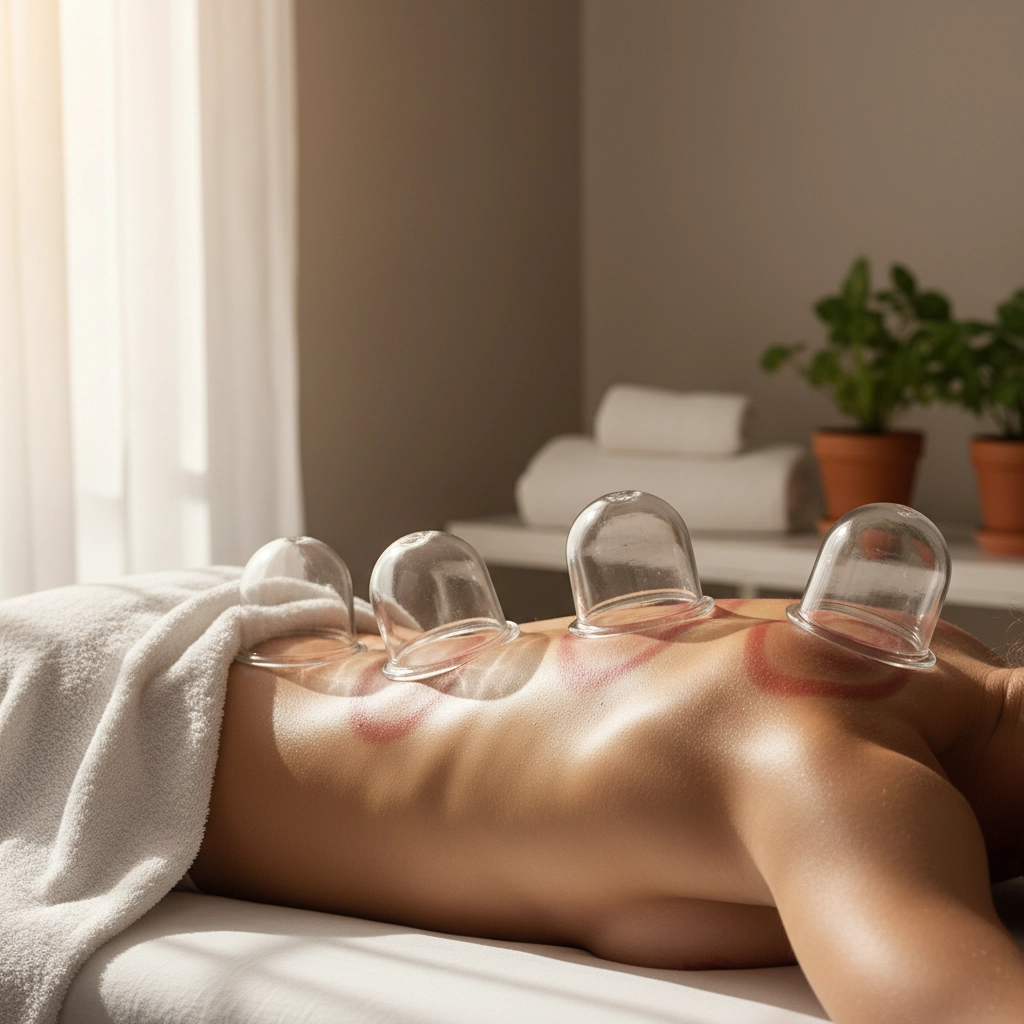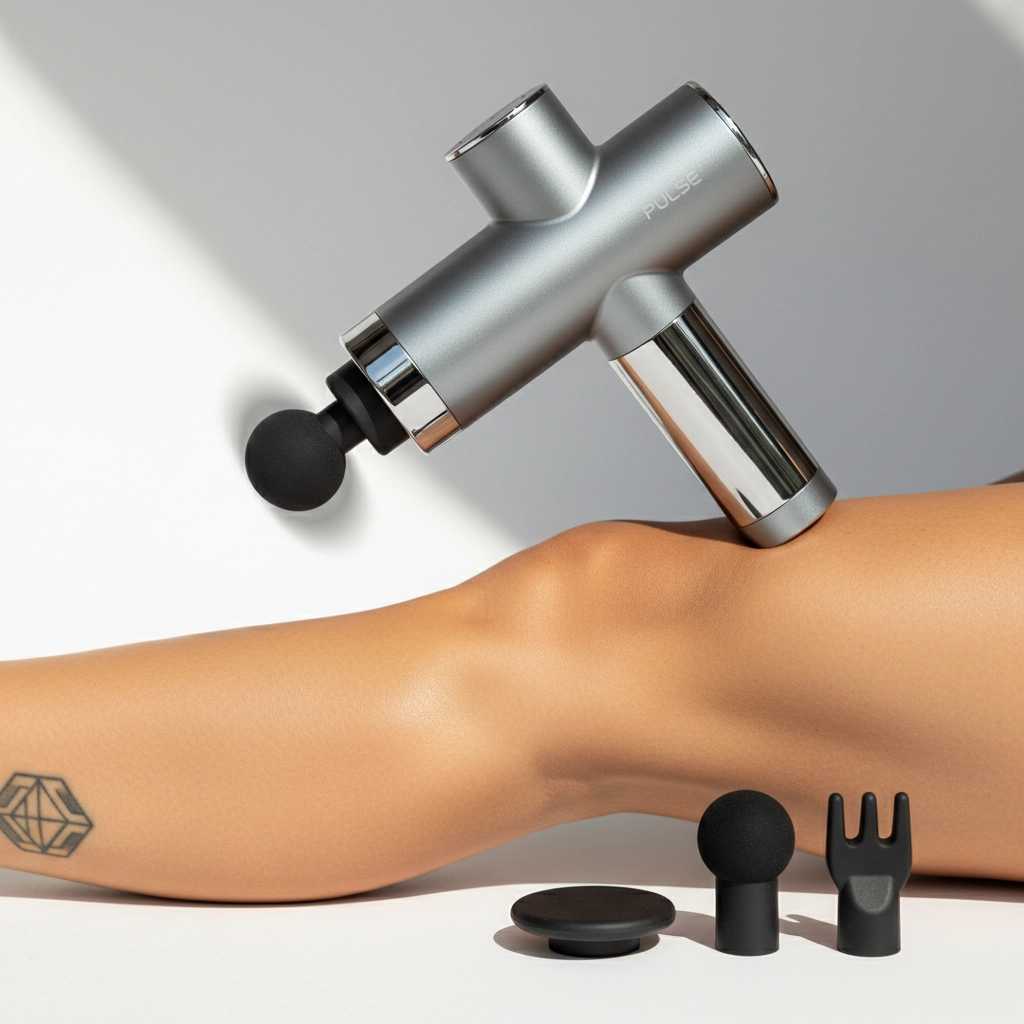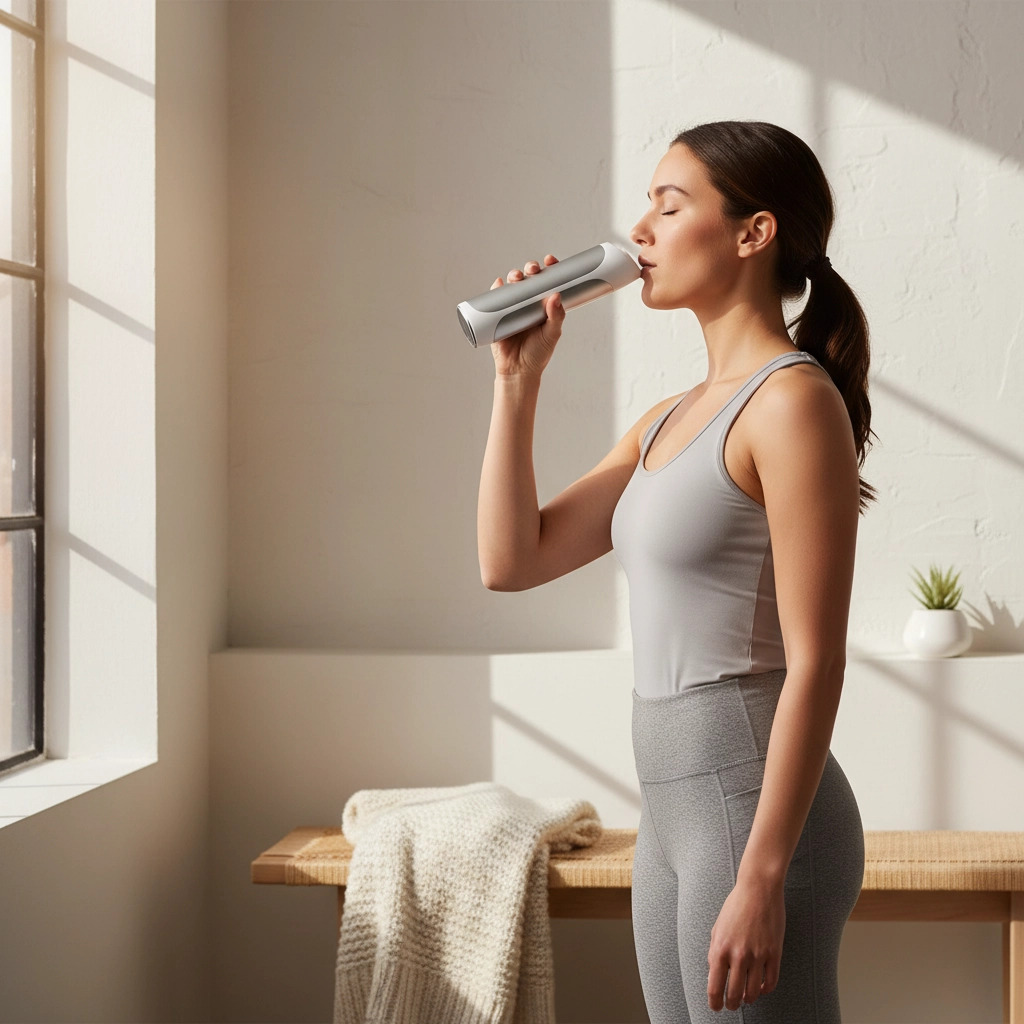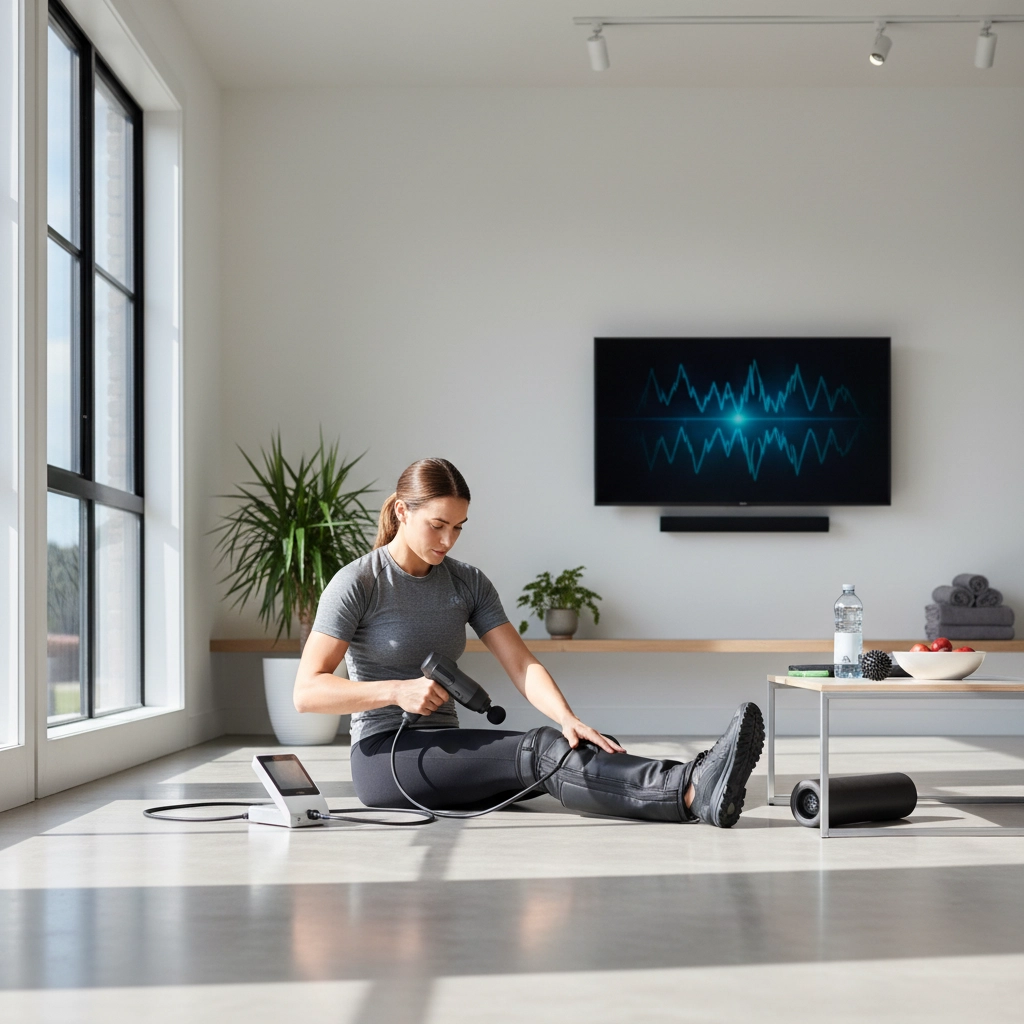Your muscles are screaming after that killer workout, and you know recovery is just as important as the training itself. But with so many recovery devices flooding the market, how do you know which ones actually work? Let's cut through the noise and break down three popular recovery tools that could transform your post-workout routine: cupping therapy, massage guns, and breathing trainers.
Whether you're a weekend warrior or a serious athlete, understanding these recovery methods can be the game-changer between feeling sore for days or bouncing back stronger than ever. Here's everything you need to know in under three minutes.
Cupping Therapy: Ancient Wisdom Meets Modern Recovery
Cupping might look like something from a medieval torture chamber, but don't let those circular marks fool you – this ancient practice is backed by solid science. The technique uses suction cups applied to your skin to create negative pressure that literally lifts and separates your fascial layers.

How Cupping Actually Works
When those cups create suction on your skin, they're doing some serious work beneath the surface. The negative pressure enhances blood circulation throughout the treated area, promoting lymphatic mobility and reducing muscle tension. Think of it as giving your circulatory system a major boost – the increased microcirculation delivers fresh oxygen and nutrients to tired muscles while simultaneously removing metabolic waste that's been hanging around making you feel stiff.
But here's where it gets really interesting: cupping also messes with your pain signals in a good way. It activates non-painful nerve fibers that essentially tell your brain to chill out and stop sending those "ouch" messages. It's like having a bouncer at the pain reception desk of your nervous system.
The Cupping Experience
A typical cupping session lasts 20-30 minutes, and yes, you'll probably end up with some circular marks that look like you wrestled with an octopus. These marks aren't bruises – they're actually evidence of increased blood flow and can last anywhere from a few days to a couple of weeks.
Cupping Pros:
- Excellent for whole-body relaxation and systemic recovery
- Reduces fascial restrictions effectively
- Improves range of motion
- Minimal equipment needed once you know what you're doing
- Great for chronic muscle tension
Cupping Cons:
- Often requires professional administration for best results
- Those distinctive marks aren't exactly beach-ready
- Less precise than other methods for targeting specific problem areas
- Can be time-consuming compared to other options
Massage Guns: The Heavy Hitters of Targeted Relief
If cupping is the gentle giant of recovery, massage guns are the precision strikers. These handheld powerhouses deliver rapid percussive strokes – we're talking 2,000 to 3,200 impacts per minute – designed to break up muscle knots and adhesions with surgical precision.

The Science Behind the Percussion
Massage guns work through a process called myofascial release. Those rapid-fire pulses penetrate deep into muscle tissue, targeting specific trigger points and increasing localized blood flow. It's like having a personal massage therapist who never gets tired and can work on exactly the spot that's bothering you.
The percussive therapy helps break down scar tissue, reduces muscle stiffness, and can even help prevent delayed onset muscle soreness (DOMS) if used properly. Plus, the vibrations essentially overwhelm your nervous system's pain receptors – similar to how rubbing a bump makes it feel better.
Using Your Massage Gun Like a Pro
The beauty of massage guns lies in their efficiency. You can target problem areas in just 2-5 minutes per muscle group. Pre-workout, they're fantastic for activation and warming up tissues. Post-workout, they help flush out metabolic waste and reduce tension before it sets in.
Massage Gun Pros:
- Incredibly portable – throw it in your gym bag
- Quick sessions mean you'll actually use it consistently
- Excellent for pre-workout muscle activation
- User-friendly once you learn proper technique
- Targeted relief exactly where you need it
Massage Gun Cons:
- Requires learning proper technique to avoid overdoing it
- Not ideal for systemic, whole-body recovery
- Quality devices come with a higher price tag
- Can be too intense for some people or certain areas
Breathing Trainers: The Underrated Recovery Champion
While cupping and massage guns work on your muscles directly, breathing trainers take a completely different approach – they optimize the foundation of all recovery: your respiratory system and nervous system regulation.

Why Breathing Matters for Recovery
Your breath is the remote control for your autonomic nervous system. Proper breathing techniques can shift you from a stressed, sympathetic state (fight-or-flight) into a parasympathetic state (rest-and-digest) where real recovery happens. Breathing trainers help you master these techniques through guided exercises and biofeedback.
These devices typically use resistance training for your respiratory muscles or provide guided breathing patterns that optimize heart rate variability, reduce cortisol levels, and improve oxygen efficiency. Some advanced models even measure your breathing patterns and provide real-time feedback to help you improve.
The Breathing Trainer Advantage
Unlike other recovery tools that work on specific body parts, breathing trainers address recovery at the cellular level. Better breathing means better oxygen delivery to every muscle fiber, improved waste removal, and enhanced nervous system regulation. It's recovery from the inside out.
Breathing Trainer Pros:
- Addresses recovery at the systemic level
- Improves sleep quality, which is when most recovery happens
- Can be used anywhere, anytime
- Benefits extend beyond just physical recovery
- Relatively affordable compared to other devices
Breathing Trainer Cons:
- Results take time and consistency to develop
- Less immediately satisfying than physical manipulation
- Requires mental engagement and practice
- Effects are subtle compared to massage-based therapies
The Ultimate Comparison: Which Device Wins?

| Factor | Cupping | Massage Guns | Breathing Trainers |
|---|---|---|---|
| Best For | Full-body recovery, chronic tension | Spot treatment, pre/post-workout | Systemic recovery, sleep, stress |
| Session Time | 20-30 minutes | 2-5 minutes per area | 5-15 minutes |
| Portability | Moderate (requires setup) | Excellent | Excellent |
| Cost Range | $50-1500+ (professional) | $100-600 | $30-300 |
| Ease of Use | Moderate to difficult | Easy with practice | Easy but requires consistency |
| Immediate Results | High | Very high | Low to moderate |
| Long-term Benefits | High | Moderate to high | Very high |
Making the Right Choice for Your Recovery Goals
The truth is, there's no single "best" recovery device – it all depends on your specific needs, lifestyle, and goals.
Choose cupping if: You're dealing with chronic muscle tension, want full-body relaxation, and have time for longer recovery sessions. It's particularly great for athletes who can plan around the temporary marks.
Choose massage guns if: You want quick, targeted relief that fits into a busy schedule. Perfect for people who work out regularly and need efficient pre and post-workout routines.
Choose breathing trainers if: You're looking to optimize recovery at the foundational level, improve sleep quality, and build long-term resilience. Ideal for high-stress individuals or those dealing with recovery plateaus.

The Power of Combining Methods
Here's the secret sauce: these devices work even better together. Use breathing techniques to optimize your nervous system, follow up with targeted massage gun work on problem areas, and finish with cupping for full-body relaxation. It's like having a complete recovery arsenal at your disposal.
The key is consistency over perfection. Pick one method that fits your lifestyle and stick with it. A massage gun you use regularly beats a cupping set that collects dust in your closet.
Your recovery game doesn't have to be complicated, but it should be intentional. Whether you go high-tech with a massage gun, traditional with cupping, or foundational with breathing training, you're taking a crucial step toward becoming the strongest, most resilient version of yourself.
Ready to level up your recovery? Your future self – the one bouncing back from workouts like a champion – will thank you for starting today.

0 comments